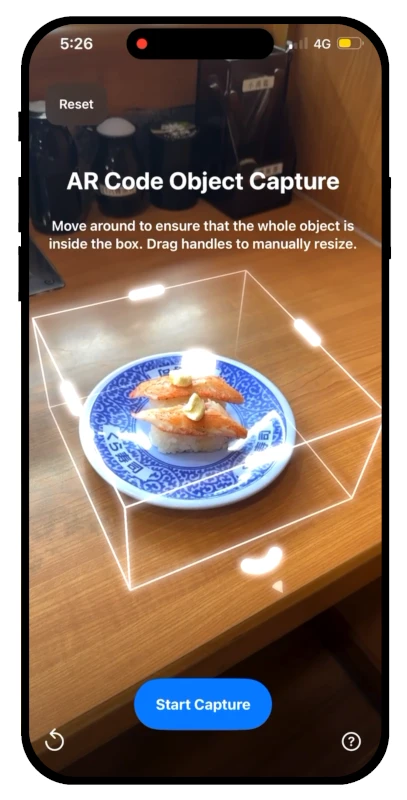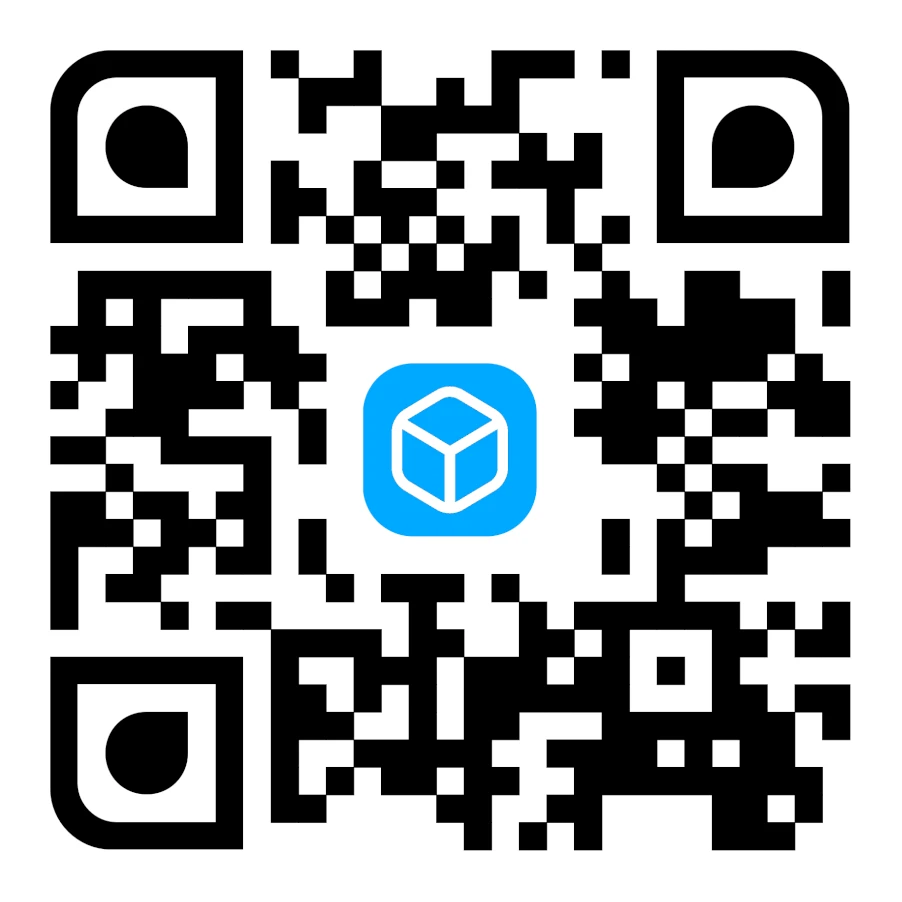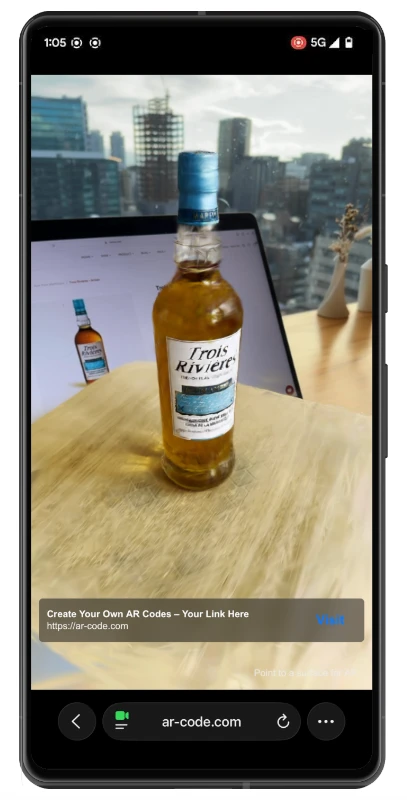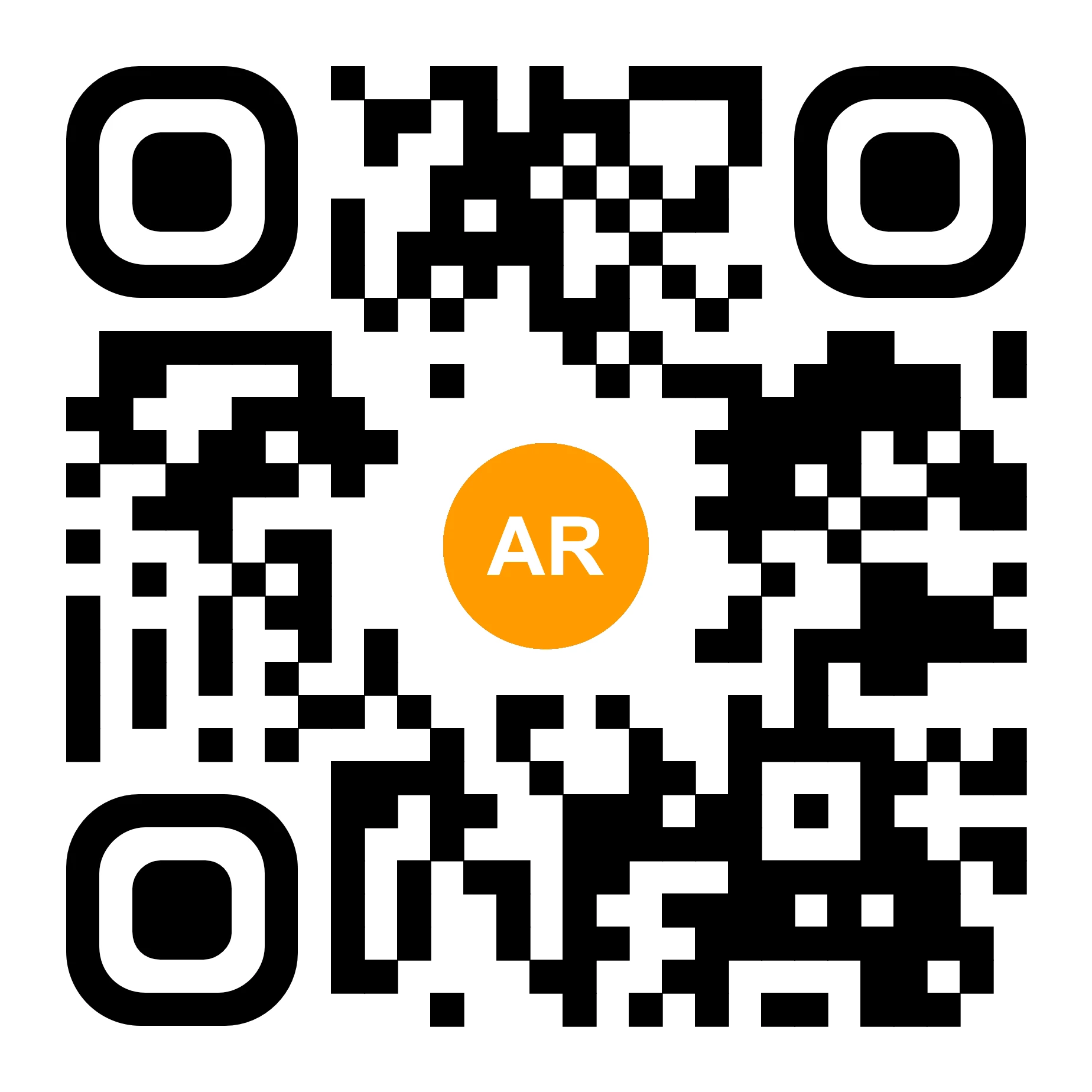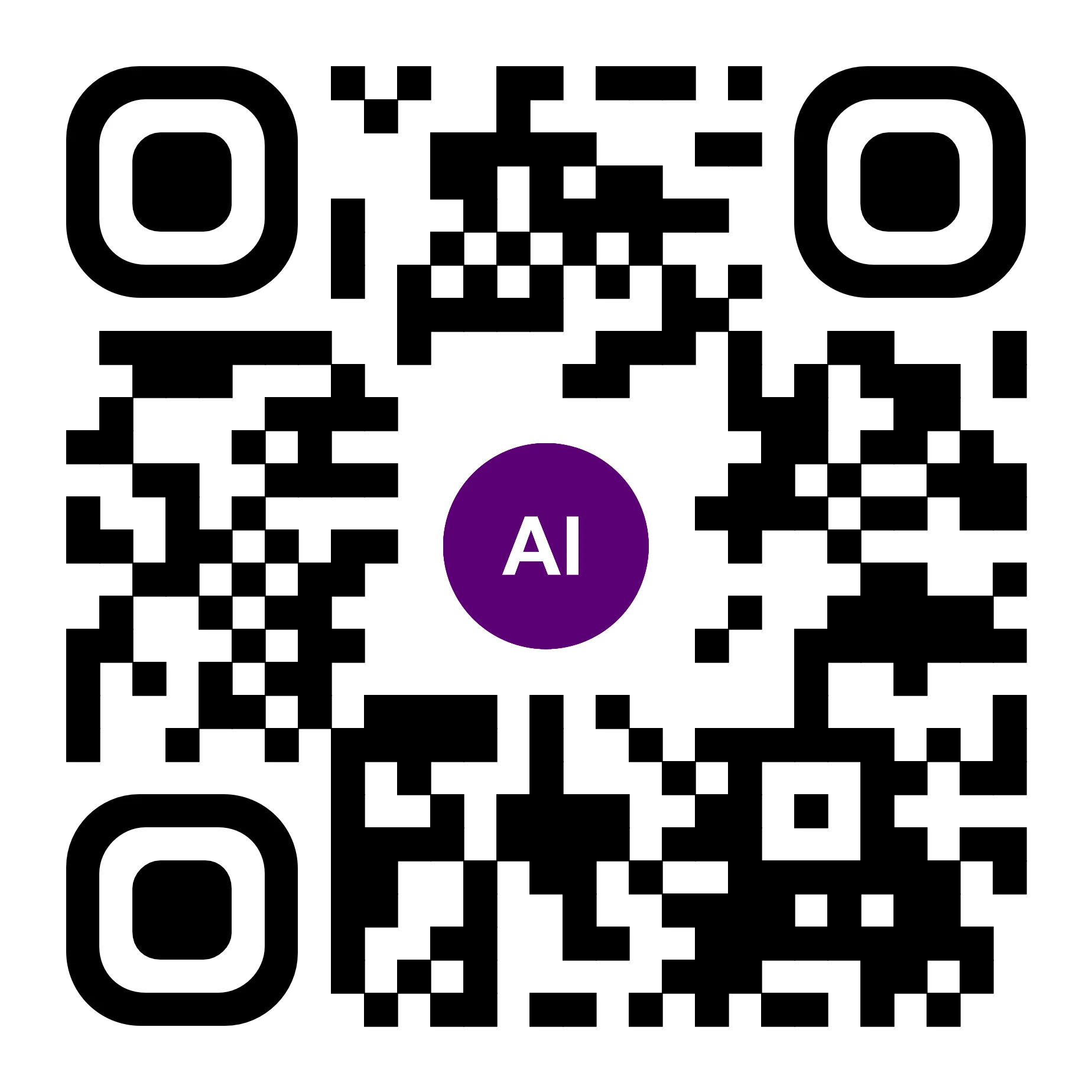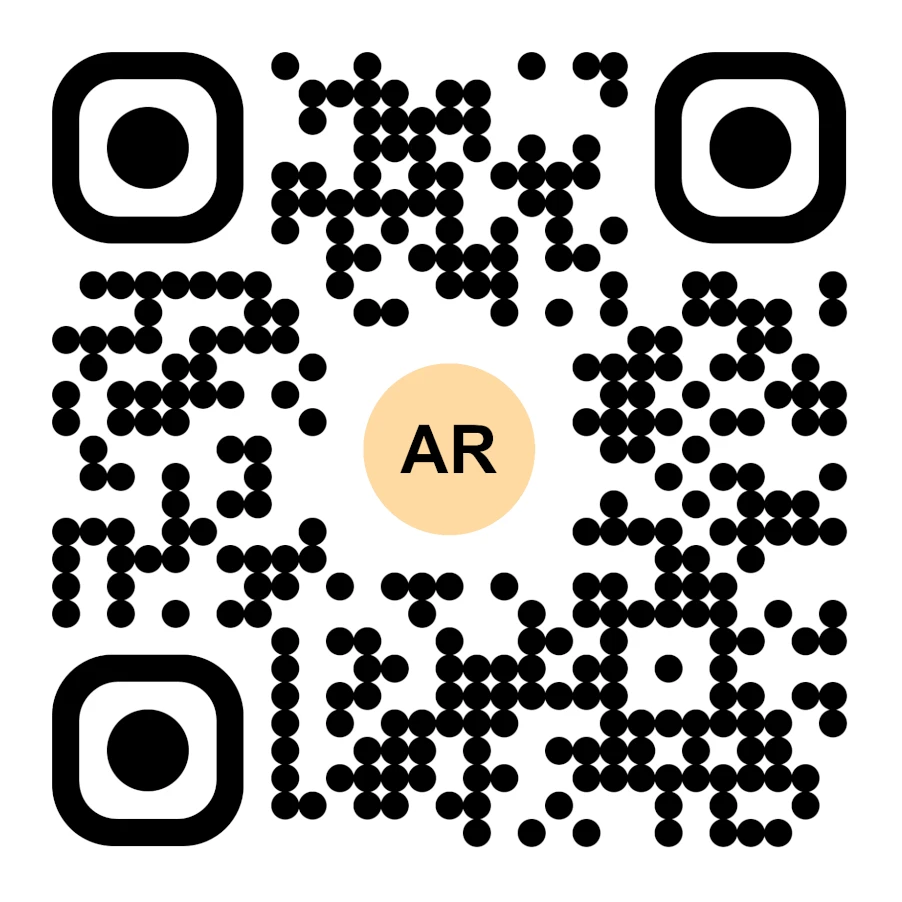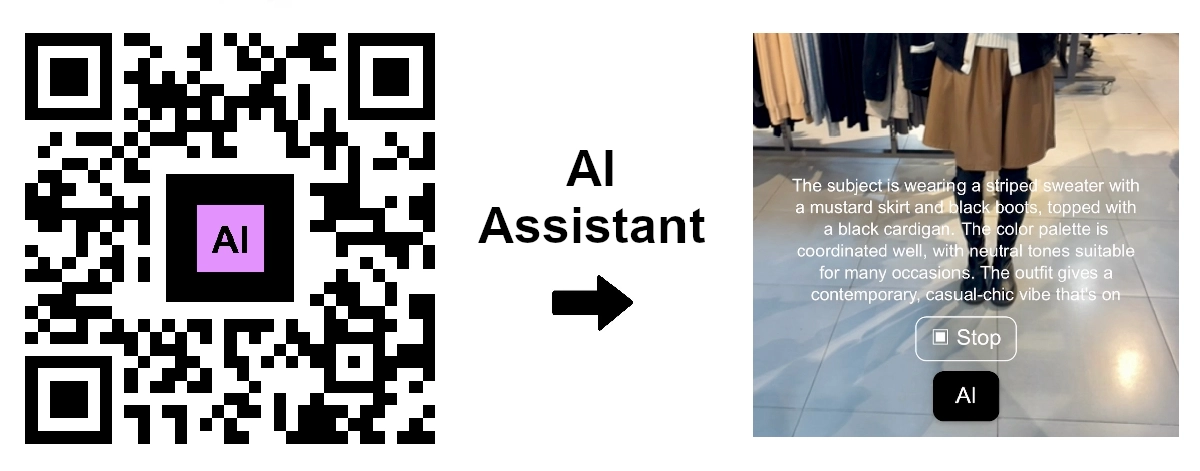
AR Splat: A New 3D Scanning-to-Augmented Reality Solution Based on Gaussian Splatting
AR Code Tech | 04/01/2026
AR Splat by AR Code empowers businesses to create immersive, high-quality 3D environments from simple videos, streamlining 3D content creation for web-based AR experiences. Upload a walk-around video and AR Splat instantly generates a photorealistic 3D scene, accessible directly through an AR QR Code. Driven by advanced Gaussian Splatting technology, AR Splat delivers exceptional realism and depth, easily viewed in the browser without any app or technical barriers. Engage your customers and teams with modern AR content while AR Code handles the complexity.

AI Code’s Image Generation Redefines Product Visualization Through a QR Code Scan
AR Code Tech | 03/01/2026
AR Code is transforming Augmented Reality (AR) and Artificial Intelligence (AI) for businesses by providing AI-generated visualizations that engage customers instantly through a QR code scan. Unlock the potential of AI Code for your business and drive customer interaction with immersive AR experiences.
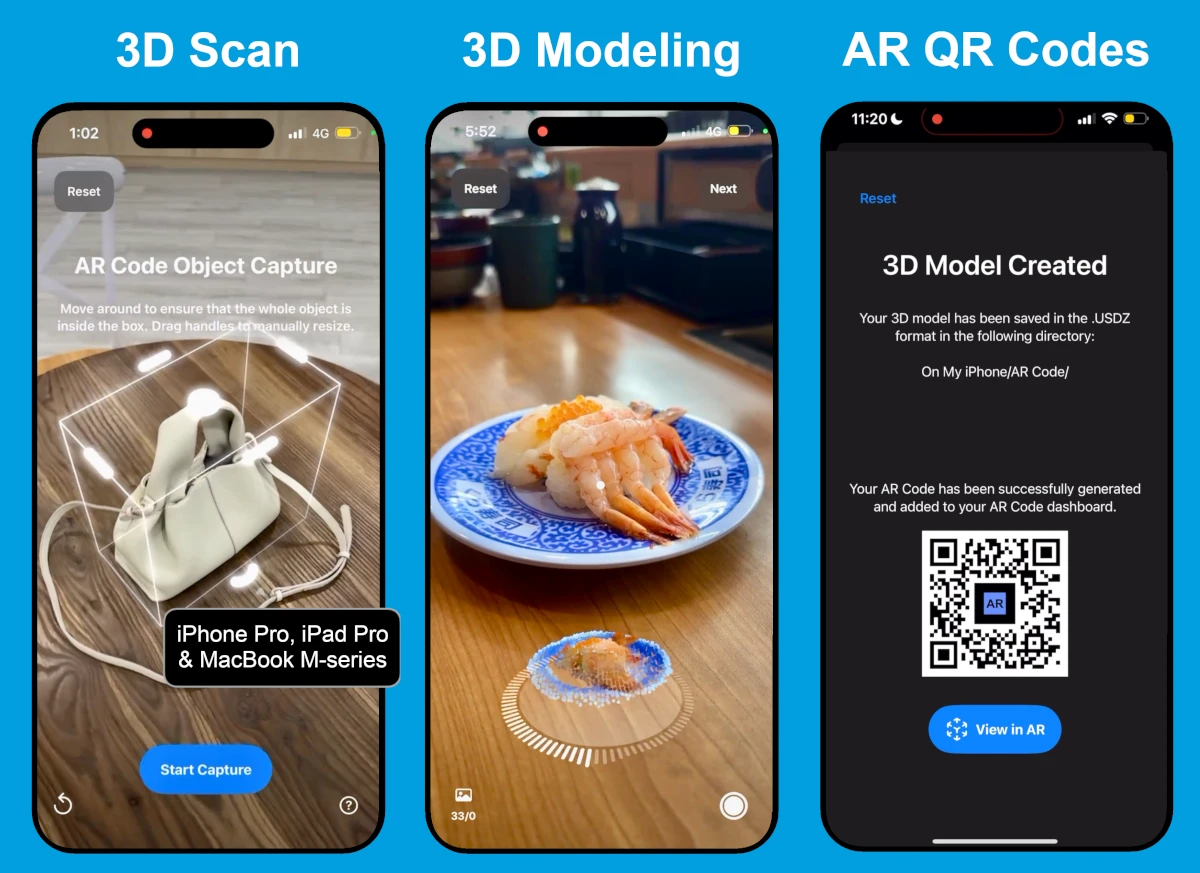
AR Code Object Capture Now Works on All iPhones and iPads No LiDAR Required
AR Code Tech | 04/01/2026
Elevate your business with immersive augmented reality using the AR Code Object Capture app. Instantly capture and create 3D models plus AR QR Codes on any iPhone or iPad, no LiDAR required, streamlining digital workflows and unlocking new customer engagement strategies. Empower your team to deliver interactive AR marketing, customer service, and product experiences across all Apple devices.
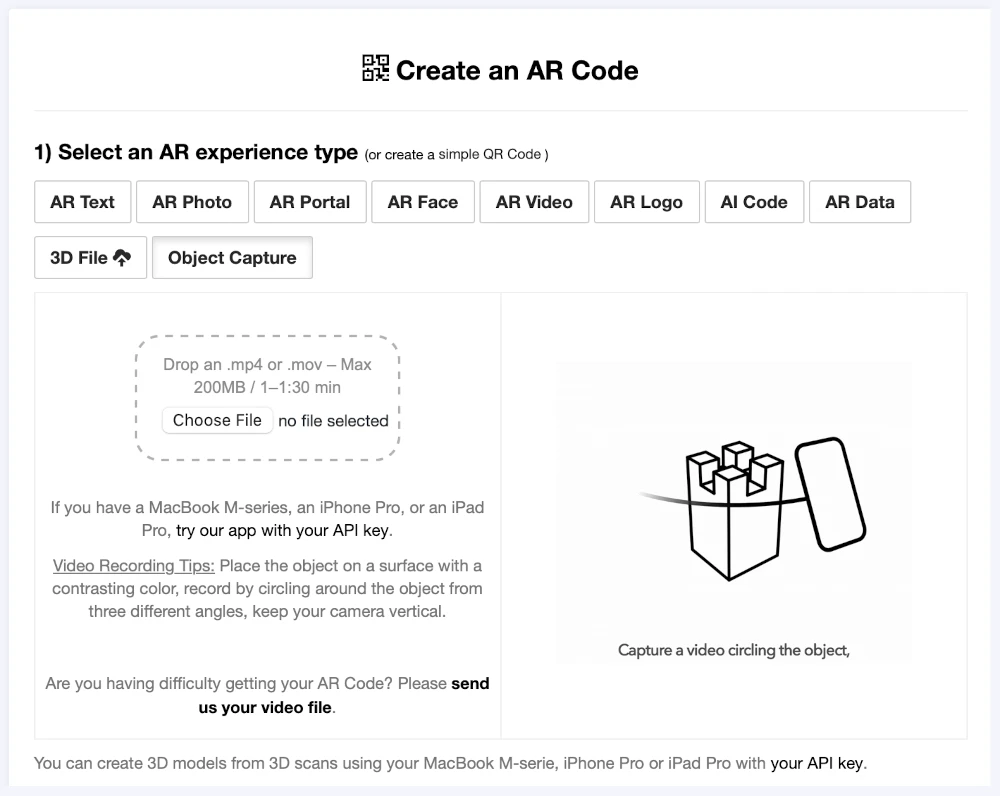
3D Scanning from Video Now Available on the AR Code Web Interface
AR Code Tech | 01/01/2026
Transform your business with the innovative AR Code Object Capture solution, now available on our web platform. Boost your brand's impact by turning video-based 3D scans into immersive augmented reality content in minutes, all without technical hassles.

Guide to 3D Scanning with Our "AR Code Object Capture" Solution
AR Code Tech | 04/01/2026
Accelerate your business’s digital transformation with AR Code Object Capture—the leading SaaS platform for 3D scanning and augmented reality experiences that drive growth, engagement, and revenue. Trusted by top organizations, AR Code delivers high-quality 3D model creation for marketing, e-commerce, manufacturing, and immersive product demos. Provide interactive AR experiences and stand out in your industry by leveraging this advanced technology.
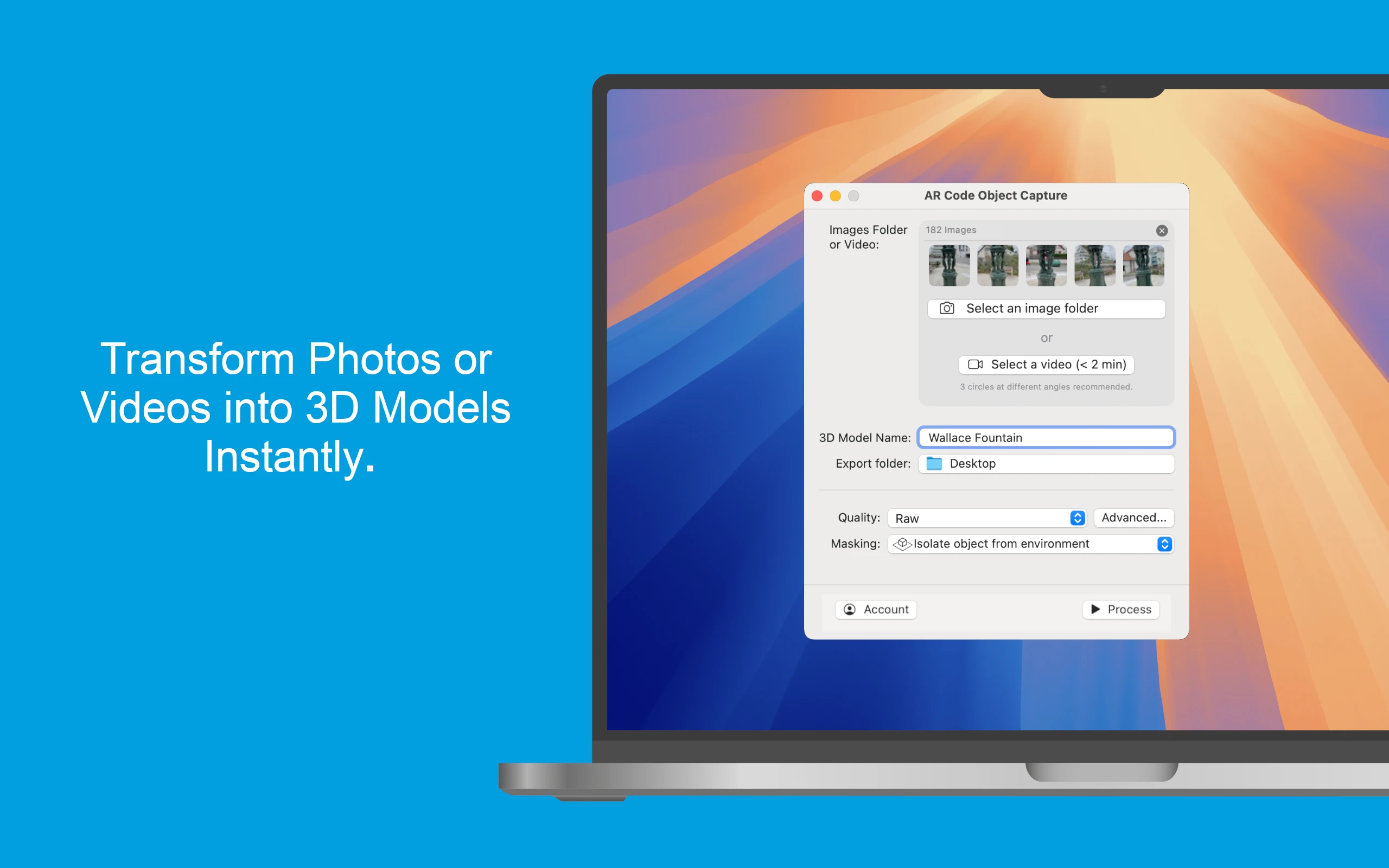
From Video to 3D Modeling: Photogrammetry with AR Code Object Capture on MacBook M-Series
AR Code Tech | 04/01/2026
Elevate your business with the cutting-edge AR Code Object Capture app, the premier 3D scanning and augmented reality SaaS platform for enterprises. Purpose-built for MacBook M-series (macOS 15.0+), this app converts real-world products into vivid 3D models and AR QR Codes in just minutes. Seamlessly compatible across iPhone, iPad, and Apple Vision Pro devices, AR Code Object Capture transforms your AR workflow into a scalable, lightning-fast solution. Create, deploy, and share stunning AR content using both our app and web interface.

Personalize Your AR Codes with Innovative Design Options
AR Code Tech | 04/01/2026
AR Codes are revolutionizing business engagement by seamlessly connecting physical products, print materials, and digital content into interactive augmented reality experiences. Unlike standard QR codes, AR Codes on the AR Code SaaS platform offer advanced visual customization, transforming plain codes into vibrant, interactive digital assets that increase brand visibility and drive measurable user engagement. When scanning an AR Code, customers instantly access immersive AR content that boosts brand interaction and loyalty. For a detailed comparison, visit the key differences between QR codes and AR Codes.
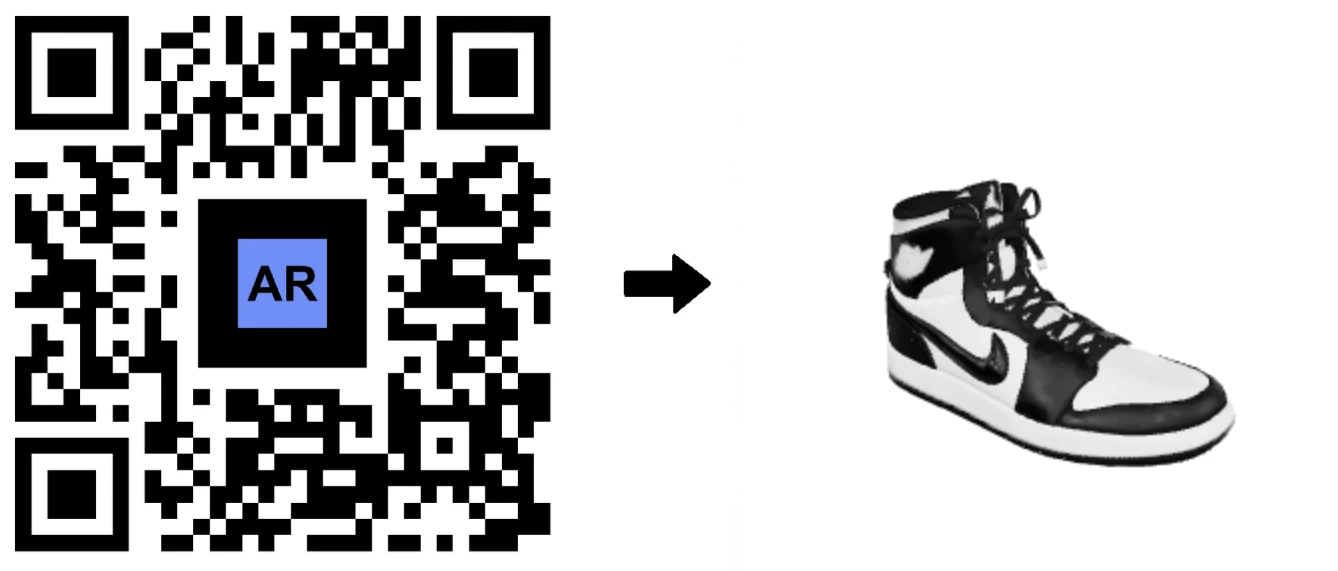
AR Code's Low-Power SLAM: Augmented Reality for Everyone, Everywhere
AR Code Tech | 04/01/2026
Accelerate your business growth with AR Code, the flexible SaaS platform revolutionizing accessibility and engagement in Augmented Reality for companies worldwide. Deploy dynamic AR experiences across premium and affordable devices, from flagship smartphones to entry-level Androids. AR Code’s advanced low-power SLAM (Simultaneous Localization and Mapping) technology enables instant browser-based AR without app downloads, extending your global reach and driving measurable customer engagement.

Revolutionize Your Online Boutique with 3D Scans Using the AR Code Object Capture App
AR Code Tech | 04/01/2026
In today’s fast-paced e-commerce world, delivering immersive and interactive shopping is crucial for businesses to stand out. Online shoppers expect to experience products as vividly as in person. AR Code helps companies surpass these expectations through leading-edge Augmented Reality solutions. Using the intuitive AR Code Object Capture app, boutiques and retailers can rapidly integrate AR-driven product visualization, offering instant 3D shopping experiences. Shoppers simply scan an AR QR Code to view lifelike 3D products in their space—no app install required.
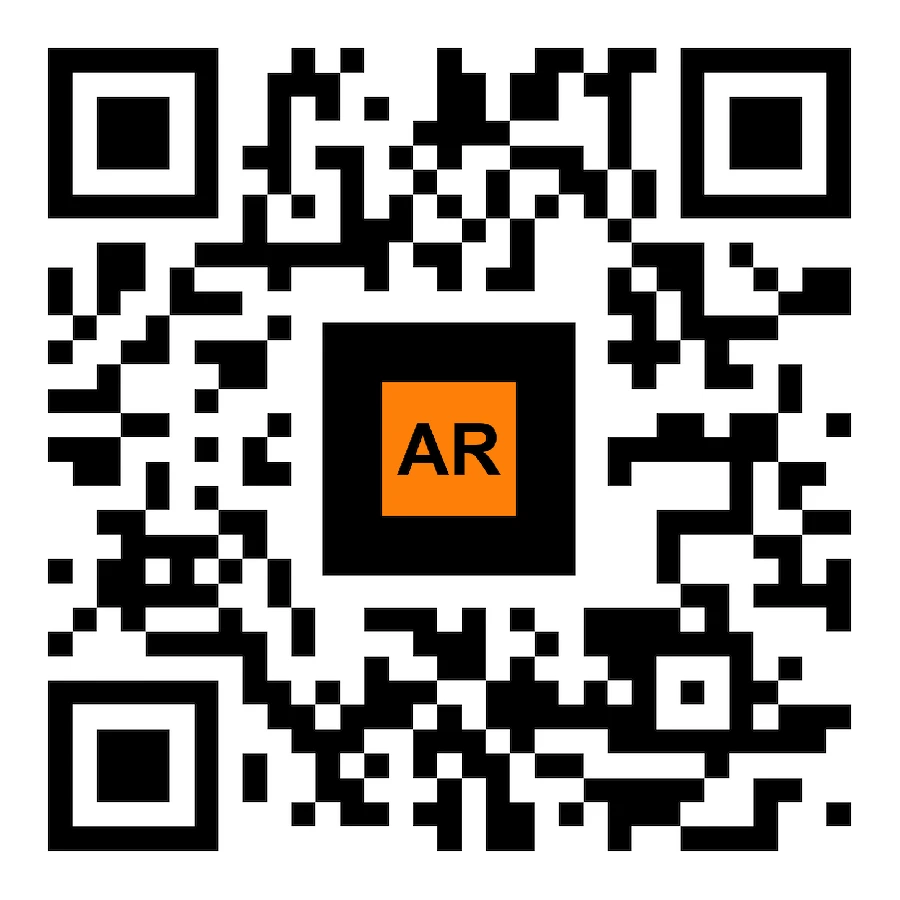
AR Face Filter Creation Simplified: Boost Brand Engagement with AR QR Codes
AR Code Tech | 04/01/2026
Accelerate your brand reach and energize your marketing strategy with the AR Face Filter, an innovative augmented reality SaaS solution from AR Code. Instantly project your logo or images onto users’ faces using advanced AR and AI technology. Perfect for sports teams, event organizers, entertainment brands, and businesses striving for outstanding audience engagement, AR Face Filters provide exceptional visibility and do not require any app download. Discover the full potential of AR Face Filter solutions and unlock interactive digital marketing for your business.

Revolutionizing Restaurant Menus with AR Code Object Capture 3D Scanning and AR QR Codes
AR Code Tech | 03/01/2026
Transform your dining and business experiences with the AR Code Object Capture tool, a state-of-the-art augmented reality SaaS solution for iPhone, iPad, and MacBook M-Series devices. AR Code enables restaurants and forward-thinking businesses to capture and share vibrant 3D scans of menu items, revolutionizing customer interaction and satisfaction. Leverage immersive AR QR Codes to showcase your offerings, enhance brand engagement, and differentiate your business with industry-leading AR technology.

Digital Transformation of Museums with AI QR Codes
AR Code Tech | 03/01/2026
In today's digital landscape, innovative museums and cultural organizations are reshaping visitor engagement and educational value with advanced Augmented Reality (AR) and Artificial Intelligence (AI) solutions. AI AR Codes are at the forefront of this transformation, enabling businesses to deliver interactive, personalized experiences that attract and retain audiences. For institutions aiming to elevate exhibitions and expand their reach, the AR Code SaaS platform offers powerful tools designed to boost engagement and open new business opportunities.

Comprehensive Guide to AR Code SaaS Plans and Licenses
AR Code Tech | 03/01/2026
Accelerate your business growth with AR Code, the top augmented reality SaaS platform built for professional use. With AR QR Codes from AR Code, businesses can deliver interactive content that increases brand awareness, drives customer engagement, and boosts sales. Choose from flexible SaaS packages designed for startups, SMBs, and global enterprises and future-proof your digital strategy today.
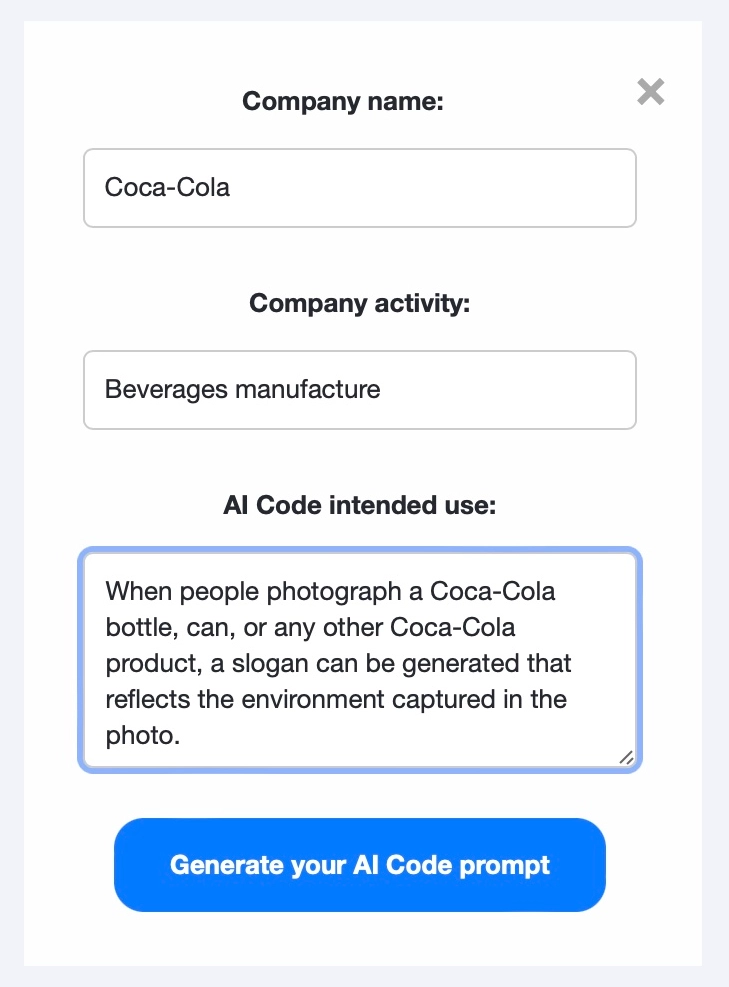
AI Code: Augment Reality Using AI Assistance and AI Virtual Try-on Through AR QR Codes
AR Code Tech | 03/01/2026
Today’s businesses must innovate to capture customer attention and outperform the competition. AR Code delivers next-generation Augmented Reality (AR) and Artificial Intelligence (AI) solutions for enterprise success. With AI Code, your brand can automate customer interactions and offer immersive experiences, reinforcing brand engagement and business growth across industries.
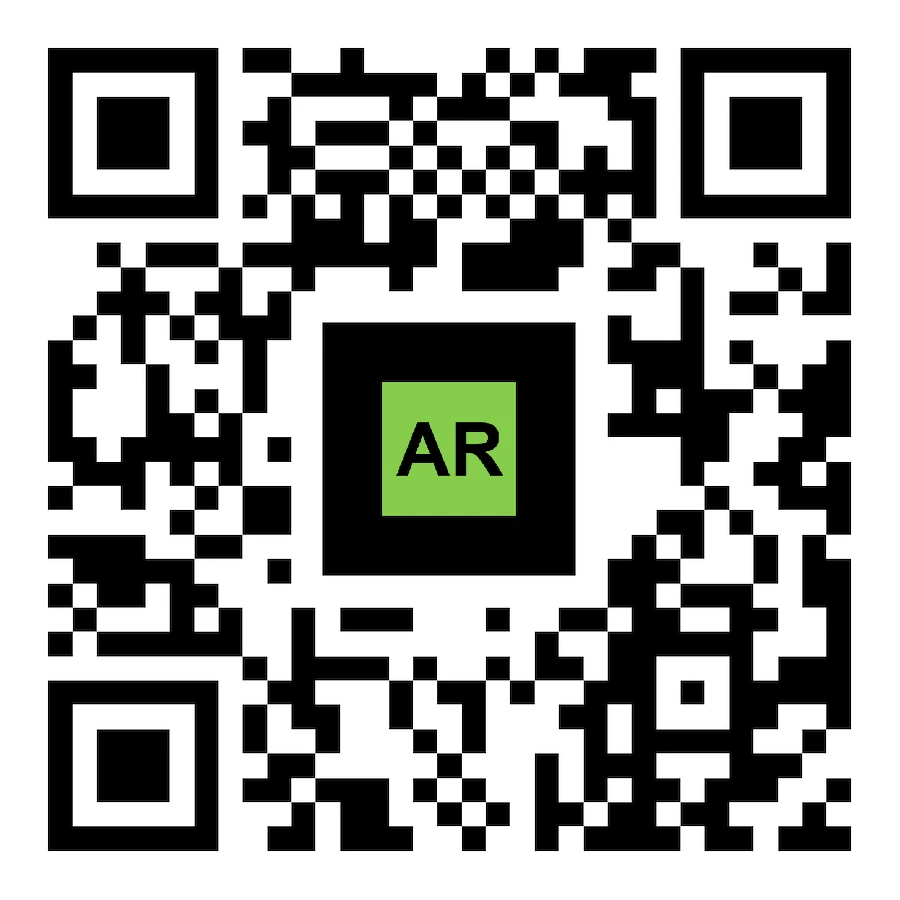
Display Remote Text Data on an AR QR Code with the AR Data Feature and Its API
AR Code Tech | 03/01/2026
Augmented reality is transforming business operations and elevating digital engagement worldwide. The AR Code AR Data feature empowers your business to showcase real-time information through AR QR Codes, accessible to any audience. This advanced AR SaaS platform streams live data into immersive AR environments, helping companies deliver high-impact customer experiences and streamline workflows. Gain an edge over competitors by integrating the powerful AR Code API to automate processes, deliver dynamic content, and strengthen your brand’s visibility.
AR Code technology enables businesses to seamlessly overlay digital assets like 3D models, text, images, and videos onto real-world environments using smartphones, tablets, and AR headsets. As a leading augmented reality SaaS solution, AR Code connects the physical and digital worlds for enhanced customer engagement and brand interaction. Discover how to scan AR Codes for instant augmented reality access.
AR Code integrates digital media with real settings for immersive AR experiences that increase user engagement and brand loyalty. Experience AR technology for virtual sports coaching and explore the benefits of augmented reality in education. Consult our AR Code SaaS guide to choose the right solution for your business.
Business Applications for AR QR Codes
AR QR Codes are reshaping industries with innovative augmented reality experiences. AR Code SaaS transforms traditional marketing and operations with interactive digital enhancements. Discover AR Codes for interactive advertising and learn how brands increase engagement and ROI.
Key industries leveraging AR QR Codes for business growth:
- Product Packaging: Increase consumer engagement and product differentiation with 3D showcases, interactive video demos, and step-by-step content. Learn how AR QR Codes transform beverage packaging marketing.
- Event Marketing: Upgrade banners, posters, and booths with AR-powered experiences for greater attendee participation. See how AR QR Codes enrich event promotional materials.
- Print Collateral: Make brochures, flyers, and business cards interactive by adding portals to digital stories. See AR QR Codes for business cards and innovative networking.
- Retail & Apparel: Offer virtual try-on and dynamic visuals for in-store displays and products to increase interaction and sales.
- Education & Training: Provide interactive AR modules for employee and student learning. Visit AR Codes in Education to learn more about AR-driven learning solutions.
- Publications & Guides: Bring books, magazines, and guides to life with 3D illustrations and interactivity. See AR QR Codes revolutionizing print publications.
- eCommerce & Websites: Enable 3D previews, shoppable AR displays, and instant product support. Use AR Codes to enhance online shopping and boost conversions.
Revolutionize restaurant menus with AR Code, transforming printed menus into engaging 3D experiences. Explore 3D scanning for digital restaurant menus. Learn about the AR Code Object Capture solution for 3D modeling on mobile devices.
Versatile AR Rendering for Business
AR Code delivers feature-rich augmented reality rendering, including interactive 3D models, photorealistic scans, animated content, and AI-powered enhancements. Drive engagement with AI Codes for product visualization and offer personalized AR experiences with tailored content.
Complete Tools for Professional AR Creation
The AR Code platform provides businesses, marketers, and educators with robust tools for creating and deploying AR projects:
- AR Code Object Capture – Easily scan real-world objects and create detailed 3D models. See our 3D scanning guide for best practices.
- AR Text – Instantly design and place custom 3D text into AR scenes. Use the Text3D mobile app for simple AR text creation.
- AR Frame – Display photorealistic 3D photos in AR for compelling experiences.
- AR Portal – Create immersive 360-degree walkthroughs with ease. Follow the AR Portal video tutorial to get started.
- AR Logo – Convert SVG files into interactive 3D logos. Learn fast 3D logo design for AR.
- AR Data API – Sync live remote data within AR experiences for real-time content. Visit the AR Code Data API tutorial.
- AR Face Filters – Integrate branded face filters for impactful AR campaigns. Try AR QR code face filters to spark brand engagement.
- AI Codes – Harness AI to create responsive, intelligent AR experiences tailored to your users.
- AR Videos – Attach engaging videos to AR QR Codes for dynamic multimedia interaction. Explore AR video features to elevate your projects.
Maximize Engagement with AR Code Marketing Tools
Increase customer engagement with Custom Links and Custom Pages for AR. Guide users to conversion with targeted calls-to-action and dynamic content tailored to each audience.
The AR Code analytics suite monitors campaign performance, user patterns, and reach with real-time data. Manage AR projects at scale utilizing cloud hosting and team collaboration features. Learn how to track and retarget users in AR QR Code campaigns for greater marketing ROI.
AR Code: Broad Device Compatibility
AR Code seamlessly supports Meta Quest 3, Apple Vision Pro, and over two billion iOS and Android devices. This broad compatibility enables your AR marketing, educational tools, and campaigns to reach the widest audience. Read how AR Code enhances Meta Quest 3 AR experiences and works with Apple Vision Pro and visionOS.
Unlock scalable augmented reality marketing and digital engagement with AR Code SaaS. Start your free AR Code trial to increase interaction, drive measurable outcomes, and keep your brand ahead in AR innovation.
148,588 AR experiences
551,040 Scans per day
128,762 Creators
